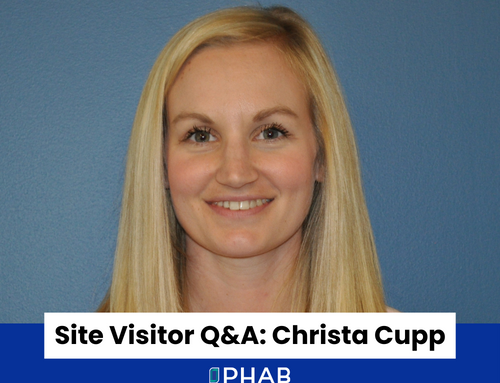Janalle Goosby
Communications Specialist
PHAB is developing the Pathways Recognition program, a program designed to support performance improvement efforts, strengthen infrastructure, and facilitate public health system transformation and accreditation readiness.
PHAB spoke with Kevin Sumner, MPH, Director, Middlebrook Regional Health Commission, Past President of NACCHO, Co-lead for the Joint PHAB/NACCHO Taskforce on Small Health Department Accreditation. Sumner was a key member in providing early guidance to the program’s development in addition to serving as a test site during Pathways development. Many other public health partners including the National Indian Health Board, the Association of State and Territorial Health Officials and the Center for State, Tribal, Local and Territorial Support at the Centers for Disease Control and Prevention have informed the development of Pathways.
—
Tell me about NACCHO’s interest in Pathways during your time as President there.
Kevin Sumner: Most health departments are small, serving small populations, having a small staff size or limited resources. NACCHO represents all health departments across the country and has always tried to reach out to small health departments to determine how they can support them. The challenge has been accreditation. Most health departments that NACCHO heard from were interested in accreditation but didn’t have the capacity or financial resources to support the work to be accredited. How could NACCHO address this without minimizing the accreditation process? The NACCHO/PHAB partnership was established to support accreditation activities.
Why is Pathways important to your health department? What benefits do you see?
KS: Pathways was an effort through the joint taskforce to come up with a mechanism to encourage small health departments to get engaged with accreditation – maybe leading to accreditation or not. Pathways is a way to recognize small and/or under resourced health departments for the work that they are doing. Pathways, I hope, will provide some ability for these types of departments to use the resources they have to improve their efforts, see the benefits, and recognize that the work they are doing is aligned with accreditation.
PHAB has been engaging with a handful of health departments to help test elements of the Pathways program. Given the ongoing pandemic, why did you decide to participate as a test site for Pathways?
KS: Honestly, it took a long time to say yes. I’ve been championing small health departments and a product like Pathways for so long that I felt obliged. It’s also been a challenge internally to focus a portion of our time to testing as we have been working around the clock with COVID.
However, it was also an opportunity to see what the program was going to be like and provide feedback from a department that has struggled. It has been a benefit to educate and re-educate staff about the whole process and why it’s important. We have the chance to bring people outside of their silos and bubbles and engage them in this process. Some staff struggle with how accreditation applies to them. The initial assessment helps draw connections to their work and I see light bulbs go off.
Do you see Pathways as a viable option for smaller health departments?
KS: Pathways is an opportunity for many health departments to dip their toe in the water toward accreditation. Obviously, we are still in the testing phase of Pathways and I would like to spend more time talking about our experience going through the testing of this program.
What are some challenges in your health department that Pathways can help mitigate?
KS: Education for staff and the governing board. We worked really hard to engage staff and board members in the process and board members didn’t really understand why they needed to be part of the conversation. Over time, Pathways can serve as an education tool for staff, the governing board, and elected officials to help them understand what they’re doing, why they’re doing it, and remind them of their mission. Pathways can be a tool for explaining some of those pieces and build support for public health.
What are you most excited about for Pathways?
KS: I am excited about the opportunity this presents for health departments that may have had the idea for accreditation but needed the tools to get there. Pathways will give them the tools. Pathways also gets us beyond the one-size fits all idea and helps define health departments in what we do, how we do it and why we do it. It improves internal operations of the department to better serve their communities.
How does this connect to public health as a whole?
KS: There has been a momentum shift. In some ways, the pandemic hurt public health because while glorifying the health care industry, it inadvertently undermined public health. I am hopeful that some people are starting to get prevention work and starting to engage in their local public health systems. Before [the pandemic] no one knew their public health departments and other public health officials; there was a lack of understanding. Hopefully we begin to see a shift.
What else would you like to share?
KS: I am hopeful that this will be an opportunity for small health departments to ultimately improve the public health system. The pieces that lead to accreditation are what’s important to health departments. If we can provide those pieces – QI, performance management, communications, etc. – it will be a positive for public health.
I am also very appreciative of PHAB. This has been a very long conversation and PHAB was willing to continue and reopen conversations around options for smaller health departments.





